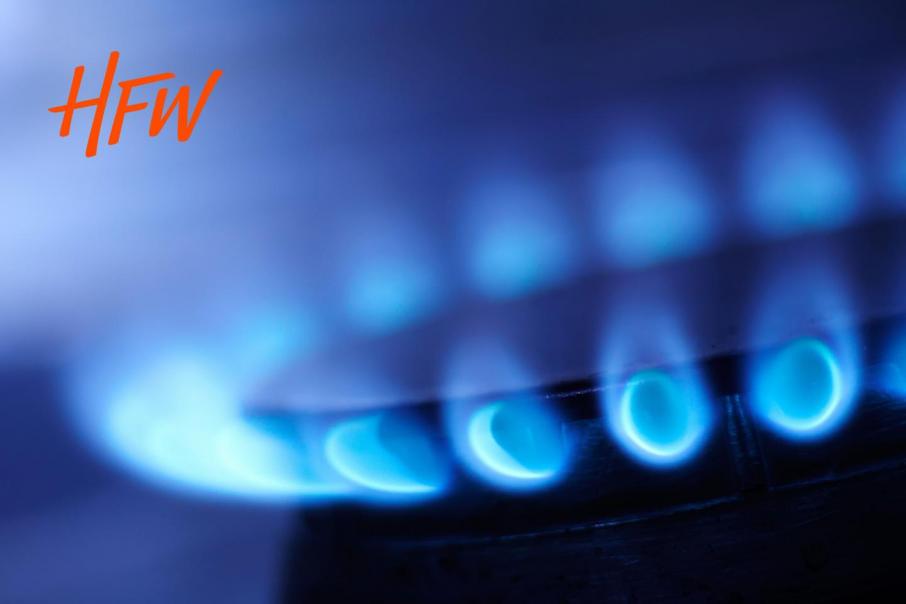

It is not often that truly revolutionary ideas in industry take hold. A review of the oil and gas sector over the last 130 years is punctuated by a small number of seismic shifts towards revolutionary concepts. In 1892 the "Murex", a bulk kerosene tanker, passed through the Suez Canal – a first in international trade – removing the need for the oil to be transported in thousands of individual barrels. The 1950s heralded mobile drill rigs and subsea well intervention technology that opened up new offshore frontiers. In the 1970s the oil industry broke new ground with the precursor to FLNG – floating vessels capable of production, storage and offloading (FPSOs).
FLNG is a recent development, but one that deserves its place in the sector's timeline of revolutionary solutions. FLNG allows extraction, liquefaction and storage of natural gas – all at sea. It opens up gas fields that would otherwise be considered too small, too remote, or too environmentally sensitive for fixed offshore platforms that feed seabed pipelines to onshore facilities. However, despite considerable noise surrounding FLNG after it was first introduced, interest in FLNG has generally waned. Will global energy demand see FLNG projects as part of a future oil and gas mix?
FLNG gains a foothold
FLNG was first posed as a solution for gas pools of around 500,000 tonnes per annum for fields of around 1 trillion cubic feet. However, with the mega FLNG projects in Australia and elsewhere (Prelude FLNG, north east of Broome, will produce 3.6 million tonnes per annum of LNG, as well as other products), FLNG can no longer be described as strictly an option for small fields. Not long after the concept was mooted the industry began looking at larger and larger applications of the technology. With the exception of Prelude and a handful of other FLNG projects (mostly in Malaysia and Africa), FLNG has failed to make serious strides into the powerful onshore processing industry. Between 2013 to 2018 a number of FLNG projects were canned before making it past lengthy design and build phases. Other projects migrated back to conventional onshore developments. FLNG development risked grinding to a halt.
Supply Contracts
Many factors contribute to the headwinds facing FLNG. Long-term supply contracts – the mainstay of the industry – do not lend themselves to the development of smaller fields with lower production rates. The sweet spot for FLNG are favourable prices in the short-term spot market, providing an alternative to the dominance of the long-term markets.
Despite growing demand for natural gas, markets are currently constricted with low prices. This is at least partly a result of the US shale gas boom which, as a lower-carbon fuel source, has led to record low gas prices worldwide. This puts strain on FLNG developments, as new FLNG projects become more attractive in higher priced markets. Until the price across gas markets increase – predicted to occur sometime next decade – large scale FLNG will continue to struggle to secure backing.
Challenges
FLNG poses unique challenges from a design and operational perspective. A processing and liquefaction plant has to operate within the footprint of the vessel, a volume that is roughly one quarter of the size of what would be used in an onshore plant. Then there is the offshore environment. Prelude FLNG is designed to remaining on station during cyclones, no mean feat given the extreme wind and waves that can be expected. FLNG also suffers from elongated supply chain arrangements that are necessary to support long-term LNG contracts.
What lies ahead?
A number of potential Australian FLNG projects have faced various delays or impediments. At one point in 2014 there were at least 5 Australian FLNG projects at varying stages of development, or the subject of serious consideration. Since then one has been built and is operating, with the remainder abandoned altogether, or deferred. In some cases development partners opted for tie in to onshore facilities or brownfield developments. Worldwide the picture is slightly brighter. Argentina's Tango FLNG Project will soon start operating, the first of its kind in the Americas. There are also plans afoot for an FLNG project in the US Gulf Coast named Delfin. Other global interest continues at the smaller end of the FLNG spectrum, mostly concerning near-shore, small-scale projects that allow expansion of existing onshore LNG train capacity.
Watch and Wait
While FLNG units are unsuited for some applications, floating liquefaction is a viable solution for countries without subsea gas pipelines and liquefaction plants nearby. More countries are becoming gas exporters and, since the unit is built somewhere else, FLNG removes the need for major infrastructure. This can ameliorate investment and political risk in the home country that may otherwise be encountered with an onshore facility. Floating liquefaction also eliminates the logistics of getting a skilled workforce on site to build an onshore plant – themselves often far from major cities. FLNG is still a developing technology and probably not the single solution for increased energy demand. The technology to perform harness and produce LNG away from land is still its infancy. A look at the industry's big achievements to date reveals that it takes time, sometimes decades, for revolutionary ideas to realise their full potential. For the interim, however, onshore LNG facilities remain the default as operators attempt to extract maximum productivity from existing assets.













